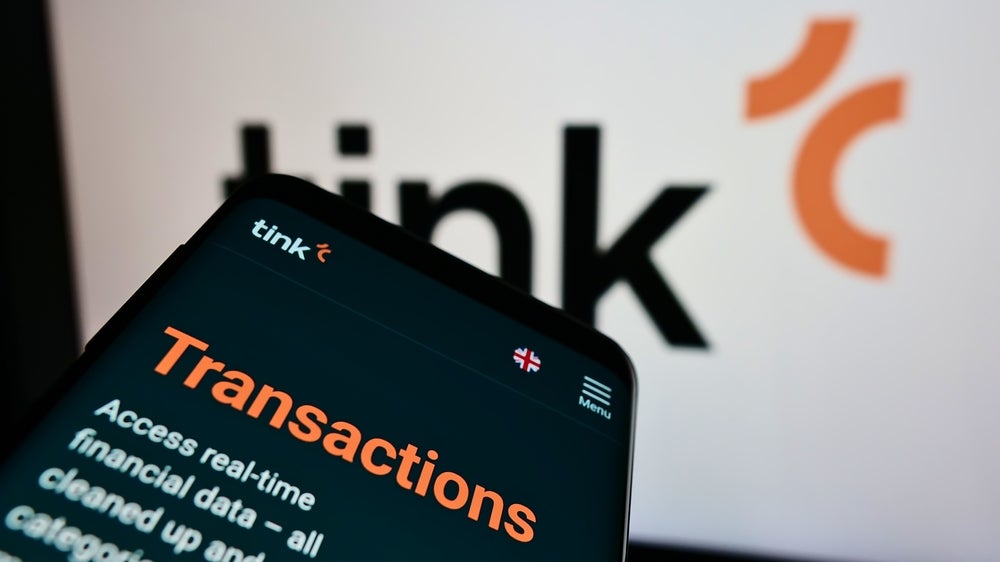Business-to-business electronic payments presents a huge
opportunity for corporates to cut costs and improve cash flow,
while for banks it remains a significant growth opportunity. Ifor
Williams of Accountis provides EPI with insight
into trends in the key electronic invoicing presentment and
payments market.
Migrating business-to-business (B2B) commerce from its traditional
paper-based format into the world of electronic payments sprung
into prominence in the late 1990s, driven primarily by the promise
held out by internet e-commerce.
In no small way, US conglomerate General Electric’s (GE) aggressive
adoption of B2B e-commerce in 1999 added a healthy dose of
credibility to projections of exponential growth in the sector.
Indicative of the euphoria, based on a broad sweep of projections
made by prominent research firms in 1999 global B2B e-commerce was
anticipated to have leapt from about $40 billion in 1998 to as much
as $10 trillion by 2005.
In the wake of this optimism, B2B e-commerce exchanges proliferated
and by early 2001 some 1,800 were either in operation or planned,
according to consultancy Booz Allen Hamilton (BAM). Most exchanges
were based in the US and Europe.
A product of what has come to be known as the dotcom boom, B2B
e-commerce also fell victim to the bursting of that particular
speculative bubble. By 2003 BAM estimated that about 45 percent of
e-commerce exchanges had gone out of business while research
articles projecting exponential growth had been replaced by advice
on how to survive the e-commerce meltdown.
How well do you really know your competitors?
Access the most comprehensive Company Profiles on the market, powered by GlobalData. Save hours of research. Gain competitive edge.

Thank you!
Your download email will arrive shortly
Not ready to buy yet? Download a free sample
We are confident about the unique quality of our Company Profiles. However, we want you to make the most beneficial decision for your business, so we offer a free sample that you can download by submitting the below form
By GlobalDataEven GE threw in the towel and in June 2002 sold 90 percent of its
e-commerce unit Global eXchange Services to private equity firm
Francisco Partners.
Slow progress
Though e-commerce and other non-paper based transactions have made
inroads into the world of commerce in recent years the pace has
been slow. This is clearly seen in the US where as recently as 2007
a study by the Association of Financial Professionals (AFP)
revealed that the typical company makes 74 percent of its B2B
payments by cheque, though this was down somewhat from 81 percent
in 2004.
Among the barriers to increased use of electronic payments, AFP
noted three issues stood out: information technology and
integration constraints, inability of trading partners to send or
receive automated remittance information and difficulty in
convincing customers and suppliers to adopt electronic
payments.
It is not that B2B electronic commerce is devoid of successes,
stressed Ifor Williams, sales director of UK-based electronic
invoice presentment and payment (EIPP) systems specialist Accountis
in a discussion with EPI.
However, he continued, successes have tended to be concentrated in
to industry-specific ventures examples of which include the oil and
automotive industries.
This industry-focused tendency was seen in two high profile entries
into the e-commerce market this year, that of Deutsche Bank and
First Data, both of which are focused on automating the global
shipping industry’s largely manual billing and payments
systems.
Accountis, which was acquired by US banking software and services
company Fundtech in February 2008, is itself a significant player
in the world of payments automation. Founded in 2002 Accountis has
grown to become the largest player in the UK’s corporate EIPP
market in which its 8,500 clients represent a one third market
share.
The correct delivery model
The question still remains: why has B2B commerce generally produced
so many disappointments and so few success stories? The answer,
believes Williams, lies in the business model chosen.
Attempts at forming B2B exchange services by non-banks have met
with limited success, said Williams who explained that corporates
are reluctant to commit to a proprietary service and will be
inclined to ask themselves: “How long will they remain in
business?”
For B2B electronic payments to succeed banks must provide the
inter-connection between companies, stressed Williams.
The reason is that, quite simply, in contrast to private B2B
exchanges banks have in their favour virtually assured permanency,
provide access to global payments networks and as processors of
high volumes of payments have the advantage of critical mass.
In addition, when a bank receives a transaction it knows where the
funds have come from, what they relate to and where they should be
sent to, and can reconcile the payment in a single place.
Unsurprisingly, Williams noted: “Accountis is focused on working
with banks to supply B2B payments solutions to their
customers.”
A significant milestone in this strategy came in June 2008 with
Accountis’ securing of a multi-year agreement with Royal Bank of
Scotland (RBS) to supply it with an RBS-branded EIPP service in the
UK. The service is offered by RBS via its business customer
internet banking portal and covers companies’ subsidiaries and
trading partners in the UK and eight other countries including
Spain, Italy and France.
In addition to its EIPP functionality the service also enables
buyers and suppliers can send statements, order confirmations,
quotations and remittances.
“The RBS service is going very well. They have had a big uptake,”
Williams commented.
He added that RBS’s initial focus was on large corporate customers
and that the bank is now beginning to offer the service to smaller
companies.
RBS provides compelling reasons to adopt EIPP including a facility
that enables companies to calculate savings that can be
anticipated.
A typical example would be a company in the retail industry
switching from a paper-based manual accounts payable and receivable
system to RBS’ service. Based on a volume of 40,000 to 50,000
invoices received annually the company can anticipate an annual
cost reduction of £138,950 ($220,000). Based on the same volume of
invoices for payments receivable an additional cost reduction of
£138,950 can be anticipated.
In sectors such as health care savings are higher and for the same
volume of invoices received and payments receivable are estimated
at a total of £327,550 annually.
Both the retail and health care sector examples take into account
the initial e-invoicing set-up fee aggregated over five
years.
Adding a further compelling argument in favour of EIPP, RBS also
stresses its positive environmental impact. For example, every
100,000 paper invoices replaced equates to 40 trees saved based on
an estimate by the Euro Banking Association.
Attractive for banks
Current economic turmoil has two positive spin-offs for development
of B2B electronic payments. For banks it is a drive to find new
revenue sources while for their business customers it is a focus by
on reducing costs and enhancing cash flows.
“For banks, e-invoicing presentment and payments represents an
attractive opportunity to increase their transaction revenue as an
extension of their core services,” said Williams.
“We are seeing a lot of interest from banks,” he added.
Among other specific attractions for banks, explained George
Ravich, Fundtech’s chief marketing officer, is that involvement in
B2B payments opens up opportunities for banks to provide trade
finance. He emphasised that trade finance is asset-based and thus
represents a lower risk to banks than unsecured advances.
Continental Europe where only some 5 percent of invoices are
presented in electronic format offers particularly significant
scope for expansion of EIPP, said Williams.
“After cheques eliminating paper invoices is the next big
frontier,” Williams said.
He continued that it is estimated that if all paper invoices were
replaced by electronic invoices savings would equal 3 percent of
the European Union’s (EU) GDP.
The huge economic benefits e-invoicing represents is fully
appreciated by the EU.
“There is significant amount of political backing in the EU for
conversion from paper to electronic invoices,” commented
Williams.
Indeed, efforts to promote e-invoicing date back to a directive
issued by the European Commission (EC) in 1999 which introduced a
legal framework to guarantee recognition of electronic signatures
in the EU.
In 2001, the EC followed this up with its Invoicing Directive which
provided a single European standard for invoice content for
value-added tax (VAT) and allowed for electronic invoicing and
storage within all member states.
However, the EC Invoicing Directive has shown itself to be flawed
in that it its interpretation is left up to the 25 individual EU
member states. In addition, problems are encountered with aspects
such as storage of electronic invoices and the format of VAT
data.
As a result businesses engaged in cross-border activity within the
EU did not have clear standards or guidelines on which to conduct
electronic business.
Fortunately, the EC is well aware of the directive’s shortcomings
and is intent on improving the situation.
To this end the EC last year commissioned professional services
firm PricewaterhouseCoopers (PwC) to undertake an independent study
into the issuance of invoices, invoice particulars, electronic
billing and electronic records.
For the study, PwC also surveyed 121 business people on the use of
e-invoicing and e-archiving in each of the EU member states. PwC
reported that the results showed a significant rise in electronic
billing compared with 2005 and that businesses see the most
important benefits as being efficiency and cost-savings.
The main hurdles to the adoption of e-invoicing were found to be
are compatibility with customer and supplier IT systems and the
want of uniform rules across the EU.
“As a consequence, businesses lack clarity as to the rules that
apply locally,” stressed PwC.
PwC’s survey also revealed that more than half of businesses that
send invoices electronically have a parallel hard-copy process
because they are unsure that the electronic solution deployed
accords with local legislation.
For suppliers, noted PwC, this entails a risk that VAT liabilities
could be due twice while the cost-saving factor is also not
achieved as a result. PwC added that for customers their
VAT-deduction rights could be jeopardised as, ultimately, they
could be jointly liable for paying the VAT that is due should the
supplier fail to do so.
Against the background of these findings the EC announced on 28
January what PwC termed an “ambitious action plan” for a 25 percent
reduction by 2012 in much of the red tape faced by both large and
small businesses using or planning to use e-invoicing.
As part of its plan to promote the use of e-invoicing and
e-archiving the EC proposes harmonising and simplifying the
European VAT rules. The EC’s proposals are largely based on
recommendations put forward by PwC as well as public consultation
conducted in 2008 and opinions of national tax authorities.
Financial supply chain
In many respects the Single Euro Payments Are, while viewed by most
European banks as a cost burden and a system that will lead to
lower transaction fees on cross-border payments, represents an
opportunity for them to introduce e-invoicing technology as a new
revenue generating service, said Ravich.
EIPP forms the foundation of what Ravich terms the financial supply
chain which in many respects represents the weak link in efforts by
corporates to achieve optimum use of cash resources.
The key role of the financial supply chain is examined in a white
paper produced by Fundtech in which its stresses: “While great
strides have been taken in eliminating inefficiency within the
[physical] supply chain through enterprise resource planning,
just-in-time manufacturing and collaborative forecasting and
planning tools, the financial side has stood still.”
Specifically, the white paper points out that improvements in the
physical supply chain has led to higher volumes there are still
significant delays in receiving, processing and reconciling
invoices. The result is that accounts receivable departments have
long day sales outstanding and considerable funds held in working
capital to deal with uncertainties in financial flows.
Quoting consultancy Killen Associates on the negative impact of
inefficient accounts processing, Fundtech noted: “A typical
billion-dollar company spends approximately $27 million annually
for unnecessary working capital and inefficient processing
functions because they lack visibility into the financial supply
chain and receivables.”
Significantly, opportunity in e-invoicing comes at a time when
banks are spending on payments-related technology. “During this
period of economic difficulty you would have expected to see the
opposite, but there is a lot going on in the payments technology
field in Europe,” commented Ravich.
For B2B electronic commerce to achieve its full potential clearly
intensive promotion of EIPP by banks and its adoption by their
business customers is of vital importance.
Ultimately, believes Ravich, given widespread adoption of EIPP it
is feasible that an e-invoicing network between banks along the
lines of the SWIFT messaging network could evolve in the EU.






